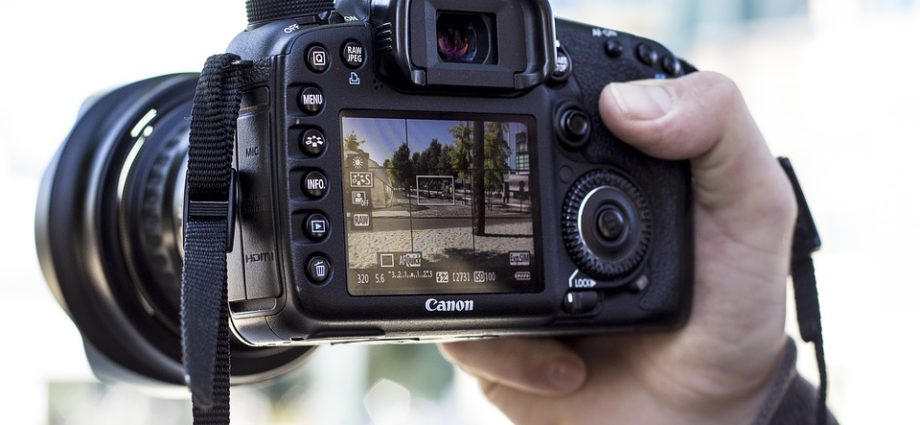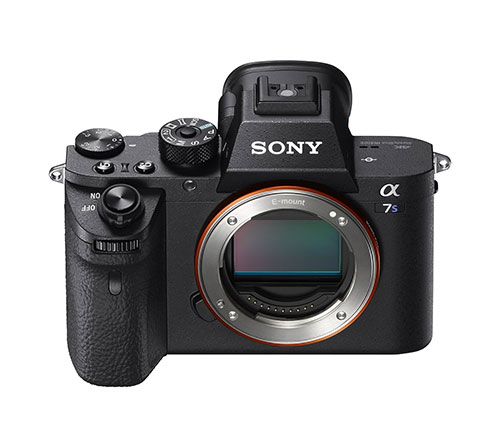DSLRs have many potential advantages for documentary filmmaking. They’re very light: they can be carried around all day and the media cards they record on are cheap and small. They also can produce quite pleasing video and you can even blend into a crowd like a tourist wearing one around your neck. Here are some of today’s top DSLRs for documentary filmmaking:
Holy cow, this is quite a camera. Panasonic started making really solid and respected DSLRs for video with the GH2, and with this highly anticipated iteration they added 4K video recording (more than twice the resolution of 1080p), better quality image processing, and an optional (but pricey) XLR interface that plugs into the bottom of the camera, allowing you to connect professional microphones. The GH4 records on cheap SDHC or SDXC cards and you can also buy additional batteries cheaply. Note however that unlike many other DSLRs, this camera is a Micro Four Thirds camera, meaning it uses M4/3 lenses
made by a variety of manufacturers. One key advantage of the Panasonic GH series has over some of Canon’s cameras is it has a headphone jack and adjustable audio input instead of auto-only audio levels. It’s not surprising that this small and light camera is turning a lot of heads in the documentary filmmaking community.
Check out our recent article titled Why Use Panasonic GH4/GH3 Cameras for Documentary Filmmaking? for more information.
The Canon 5DMIII was the camera that started the DSLR video revolution back in 2008. The 5D Mark III is a worthy successor, building upon the strengths of the II, and adding a headphone jack for audio monitoring, manual audio levels, and superior video recording quality. The 5DMIII also features a full frame sensor, making it very easy to achieve buttery shallow depth of field images with lenses from Canon’s EOS line. Of course, it still records 1080p video with H.264 or AVC High Profile at a variety of frame rates and bitrates. One thing to note is that the 5DMIII is heavier than, say, a Micro Four Thirds camera like the GH4.
The Sony a7s II offers both 1080p and 4K video recording and incredible low light performance in a compact DSLR body. It also offers S-Log 3, an undeniably impressive professional grade color mode which allows you to shoot footage quite flat, preserving absurd amounts of detail for later color correction. If you’re planning to do some heavy post processing for color correction after you shoot, the Sony a7s II will provide you with an insane amount of color information to push lighter or darker, meaning your work may even come out looking more like a Hollywood film than a documentary. Maybe that’s a slight exaggeration but the results with the a7s II’s S-Log 3 are nothing short of bananas. It accepts E-Mount lenses and combines them with three axis video stabilization (key in a DSLR where camera shake is inevitable) and great autofocus for a DSLR. It also offers 120 frames per second shooting in 1080p. Even though this is a relatively new camera, we predict there will be a lot of great documentaries (and great looking documentaries) shot with it.
The predecessor to the GH4 listed above, the Panasonic GH3 is still a great DSLR for documentary filmmaking, and it’s certainly cheaper than the GH4 is. Like the GH4, the GH3 records on cheap SDHC or SDXC cards and you can also buy additional batteries cheaply. You won’t get any 4K recording with the GH3 but it does record good quality 1080p video in a variety of frame rates and high bitrates. Note however that unlike many other DSLRs, this camera is a Micro Four Thirds camera, meaning it uses M4/3 lenses made by a variety of manufacturers. One key advantage of the Panasonic GH series has over some of Canon’s cameras is it has a headphone jack and adjustable audio input instead of auto-only audio levels. It’s not surprising that this small and light camera is turning a lot of heads in the documentary filmmaking community.
Factors to consider when choosing a DSLR for documentary filmmaking:
How heavy is this camera? How about with its lenses? Full frame lenses, like the 5D uses, weigh more. And indeed, the 5D itself weighs more than a small and light micro four thirds camera like the GH4 or GH3. Weight often matters when it comes to documentary filmmaking, especially because you may find yourself shooting events for hours on end and when you add in the weight of a stabilization rig that you may need to use, things can get heavy fast.
How expensive are the lenses this camera uses? Generally speaking, the more manufacturers making lenses for a particular lens mount, the cheaper they will be because competition drives prices down. Also the more range of lens options you will probably have access to. Newer cameras like the Sony A7S may have a more limited selection of lenses, while Canon’s camera lenses might be more expensive than micro four thirds lenses (like the Panasonic GH3/4 use) which are made by a wide variety of lens manufacturers. To be fair, all of the cameras listed in this article have at least two lens manufactures making lenses for their mount systems but it’s worth considering the price and availability of the lenses that your DSLR will use.
How large is this DSLR? This matters most for people with particularly large hands. Full frame cameras like the 5D are fairly large but smaller micro four thirds cameras like the Panasonic GH series may be a bit less comfortable for folks with larger hands. Consider getting a full frame camera like the Sony A7S or 5D if you’ve got larger hands.
Related:
The Best Lav Mics For DSLR Cameras
10 Accessories Your Documentary Film Camera Kit Needs
5 Things to Consider Before Buying A Documentary Film Camera
Lavaliere Microphones for Documentary Film
List: Top DSLRs for Documentary Filmmaking
Documentary interview lighting kits
List of DSLRs That Shoot 4K Video
Best Documentary Filmmaking Cameras in 2019





Comments are closed, but trackbacks and pingbacks are open.